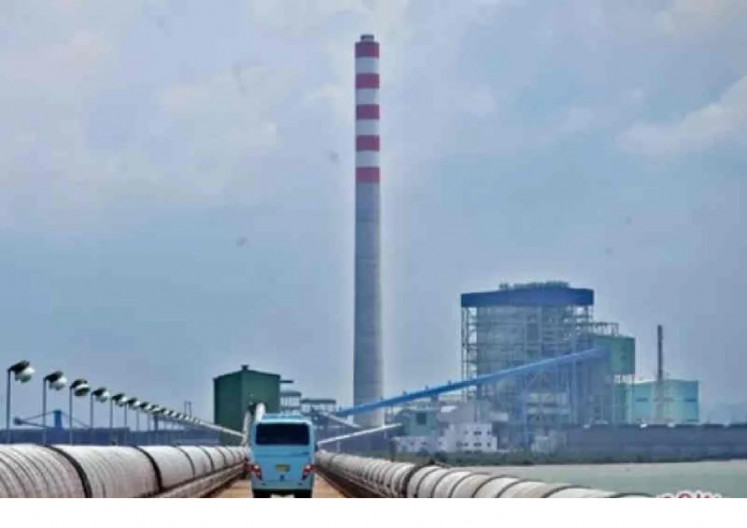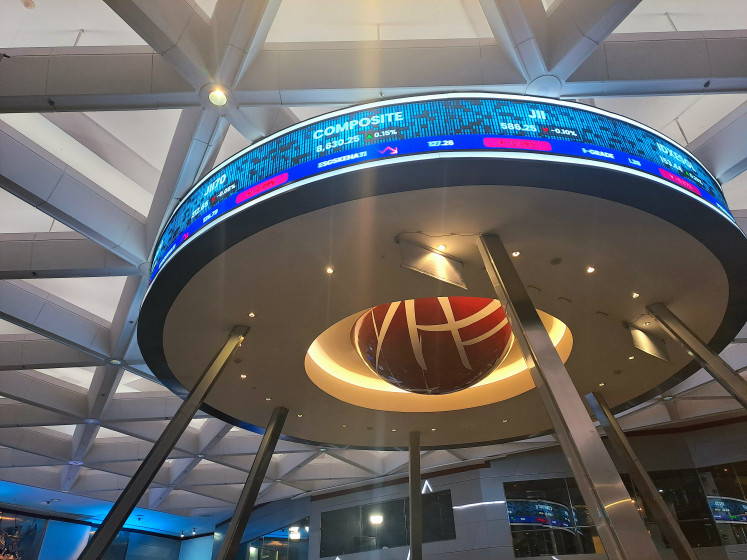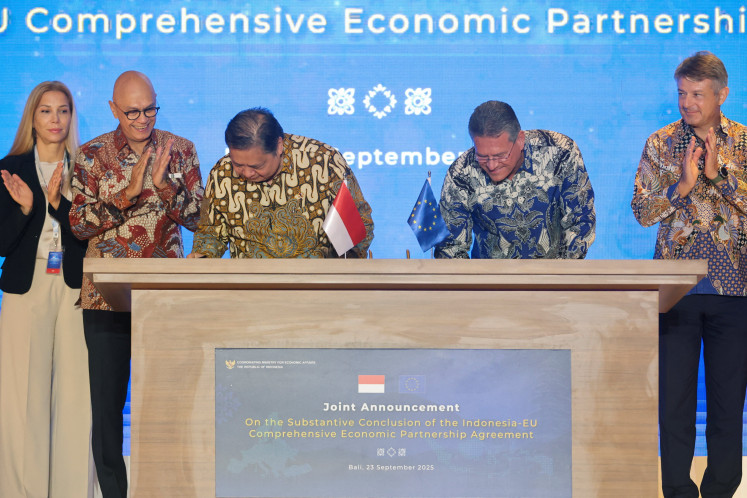Popular Reads
Top Results
Can't find what you're looking for?
View all search resultsPopular Reads
Top Results
Can't find what you're looking for?
View all search resultsChina's factory output, retail sales growth slump in blow to economy
Industrial output grew 5.7 percent year-on-year in July, National Bureau of Statistics (NBS) data showed on Friday, the lowest reading since November 2024, and compared with a 6.8 percent rise in June
Change text size
Gift Premium Articles
to Anyone
C
hina's factory output growth slumped to an eight-month low in July, while retail sales slowed sharply, raising pressure on policymakers to roll out more stimulus to revive domestic demand and ward off external shocks to the US$19 trillion economy.
The underwhelming indicators come as officials navigate pressure on multiple fronts ranging from US President Donald Trump's trade policies to extreme weather, excessive competition in the domestic market, and chronic weakness in the property sector.
Industrial output grew 5.7 percent year-on-year in July, National Bureau of Statistics (NBS) data showed on Friday, the lowest reading since November 2024, and compared with a 6.8 percent rise in June. It missed forecasts for a 5.9 percent increase in a Reuters poll.
Retail sales, a gauge of consumption, expanded 3.7 percent in July, the slowest pace since December 2024, and cooling from a 4.8 percent rise in the previous month. They missed a forecast gain of 4.6 percent.
A temporary trade truce reached between China and the United States in mid-May, which was extended by another 90 days this week, has prevented US tariff rates on Chinese goods from returning to prohibitively high levels. However, Chinese manufacturers' profits continue to take a hit from subdued demand and factory-gate deflation at home.
"The economy is quite reliant on government support, and the issue is those efforts were 'front-loaded' to the early months of 2025, and by now their impact has somewhat faded out," said Xu Tianchen, senior economist at the Economist Intelligence Unit.
That policy support has helped the world's second-largest economy avoid a widely anticipated sharp slowdown, along with factories taking advantage of the US-China trade truce to front-load shipments, but analysts say weak demand at home and global risks will drag on growth in coming quarters.
Friday's data drew a mixed reaction from investors, with Chinese blue chips up 0.5 percent and Hong Kong stocks down 1.1 percent in afternoon trading.
Fixed asset investment grew just 1.6 percent in the first seven months of the year from the same period last year, compared with an expected 2.7 percent rise. It had expanded 2.8 percent in the first half.
"Firms may be running on existing capacity rather than building new plants," said Yuhan Zhang, principal economist at The Conference Board's China Center.
"The July industrial value-add breakdown tells a more nuanced story than the weak fixed asset investment headline," he added, pointing to China's automobile manufacturing, railway, shipbuilding, aerospace and other transport equipment industries as "outliers [that] indicate policy-driven, high-tech and strategic sectors are still attracting substantial capital."
Beijing has recently stepped up policy measures and made pledges to prop up domestic consumption and curb excessive price competition, as authorities strive to lift economic growth towards the government's 2025 target of around 5 percent.
The government's renewed crackdown on 'disorderly' competition will help prices recover, Fu Linghui, a spokesperson for the NBS told reporters following the data release.
Officials worry overcapacity among Chinese manufacturers and the price cuts made to clear stock are raising expectations among consumers, who are showing few signs of loosening their purse strings, for ever cheaper goods.
China's new yuan loans contracted in July for the first time in 20 years, separate bank lending data showed on Wednesday, pointing to weak private sector demand.
A protracted slowdown in the nation's crucial property sector, a key store of household wealth, continues to put pressure on consumer spending.
New home prices extended a stagnant phase for over two years, falling 2.8 percent in July year-on-year, versus a 3.2 percent drop in June.
"The accelerating downturn in property prices in the past few months signals that further policy support is needed," Lynn Song, ING's chief economist for Greater China, said in a note.
"It’s difficult to expect consumers to spend with greater confidence if their biggest asset continues to decline in value every month."
Economic activity has also been impacted by extreme weather, from record-breaking heat to storms and floods across the country, disrupting factory production and day-to-day business operations.
The latest Reuters poll projected China's GDP growth to slow to 4.5 percent in the third quarter and 4.0 percent in the fourth, suggesting that Beijing has its work cut out in getting households to spend more at a time of uncertainty over job security and mounting headwinds from Trump's global trade war.
China's 2025 GDP growth is forecast to cool to 4.6 percent - falling short of the official goal - from last year's 5.0 percent and ease even further to 4.2 percent in 2026, according to the poll.
"We see little reason to expect much of an economic recovery during the rest of this year," said Zichun Huang, China economist at Capital Economics.
"The lack of committing to any additional fiscal support in the latest Politburo meeting points to a fading fiscal tailwind."










